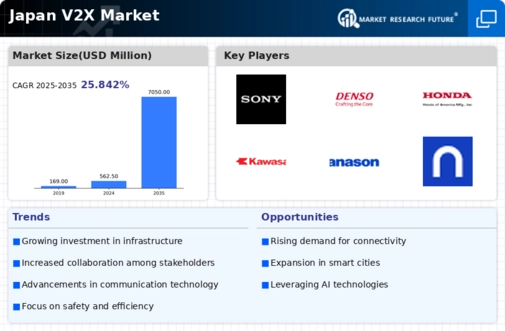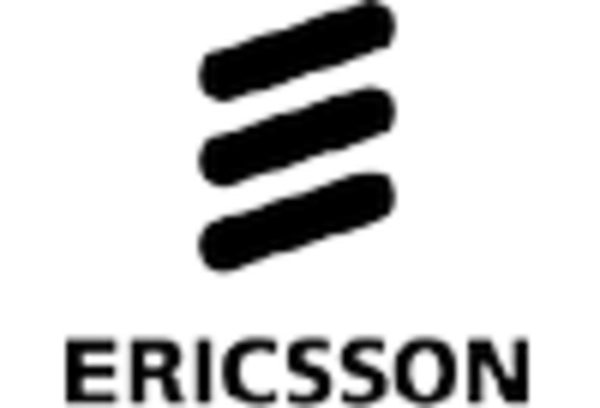Rising Demand for Autonomous Vehicles
The increasing demand for autonomous vehicles in Japan is significantly influencing the v2x market. As consumers and manufacturers alike seek to enhance mobility solutions, the integration of v2x technologies becomes essential for the safe operation of autonomous systems. Market forecasts suggest that the autonomous vehicle segment could account for over 25% of the total automotive market by 2030. This shift is likely to drive investments in v2x infrastructure, as seamless communication between vehicles and their surroundings is critical for the functionality of autonomous systems. Consequently, the growth of the autonomous vehicle sector is expected to propel the v2x market forward.
Government Initiatives and Regulations
The Japanese government is actively promoting the v2x market through various initiatives and regulatory frameworks. Policies aimed at reducing carbon emissions and enhancing road safety are driving the adoption of connected vehicle technologies. For instance, the government has set ambitious targets to reduce traffic fatalities by 50% by 2030, which necessitates the implementation of v2x solutions. Additionally, funding programs for research and development in smart transportation are expected to reach approximately $500 million by 2026. These government efforts are pivotal in shaping the v2x market, fostering an environment conducive to innovation and investment.
Urbanization and Smart City Development
Japan's rapid urbanization and the push towards smart city development are key drivers of the v2x market. As urban areas become more congested, the need for efficient transportation solutions intensifies. Smart city initiatives, which incorporate v2x technologies, aim to optimize traffic flow and enhance public safety. Reports indicate that investments in smart city projects in Japan could exceed $1 billion by 2027. This trend not only supports the growth of the v2x market but also aligns with Japan's vision of creating sustainable urban environments. The integration of v2x systems in smart cities is likely to improve overall quality of life for residents.
Technological Advancements in Communication
The v2x market in Japan is experiencing a surge due to rapid technological advancements in communication systems. Innovations such as 5G networks are enhancing vehicle-to-everything communication, enabling real-time data exchange between vehicles, infrastructure, and pedestrians. This improved connectivity is expected to increase the efficiency of traffic management systems, potentially reducing congestion by up to 30%. Furthermore, the integration of advanced sensors and AI technologies is likely to enhance safety measures, thereby attracting investments in the v2x market. As Japan aims to lead in smart mobility solutions, these technological developments are crucial for the growth of the industry.
Increased Focus on Environmental Sustainability
The v2x market in Japan is increasingly driven by a focus on environmental sustainability. As the nation strives to meet its climate goals, the adoption of eco-friendly transportation solutions is becoming paramount. The integration of v2x technologies facilitates the use of electric and hybrid vehicles, which are essential for reducing greenhouse gas emissions. Market analysis suggests that the electric vehicle segment could grow by over 40% in the next five years, further bolstering the v2x market. This emphasis on sustainability not only aligns with global trends but also positions Japan as a leader in environmentally conscious transportation solutions.
















Leave a Comment